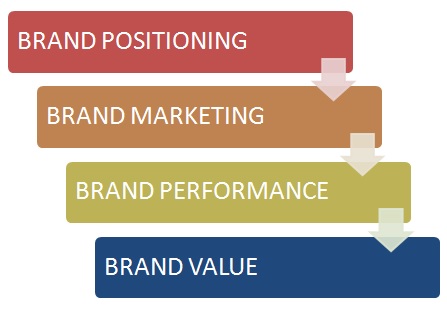
Strategic brand management is the process of creating, assessing, and maintaining brand presence, brand equity, and brand awareness to increase revenue and achieve long-term corporate goals. To run an organisation effectively, strategic brand management is critical. This type of brand management encompasses centralising functional, traditional and digital social media assets to guarantee brand consistency across numerous touch points and ultimately generate valuable leads, strong brand presence, sales, loyalty, conversion, and sustainability.
If brand management is your field of interest, then you can check out the brand management courses and apply for one. In today’s world, every company needs visibility. IIT Delhi offers Executive Programme in Brand Management that will equip professionals with in-depth brand management know-how and refine their core skills.. This course is delivered by esteemed faculty and renowned industry experts. Participants can get industry-oriented insights which will pave their way to becoming successful brand managers. Want to know more about this programme? Register with Jaro Education.
Basics of strategic brand management
Strategic Brand Management is the skilled use of tactics through which a brand selects and measures an appropriate branding strategy to ensure brand identity, acquire brand awareness and maximise brand success. Its major goal is to promote a brand and get the recognition required to outperform competitors and achieve success. This can help companies to meet long-term business goals and increase revenue. The term “strategic” refers to dealing with and managing a brand’s assets and long-term ambitions. A company’s products and services might benefit from a branding plan. However, one should not confuse brand management with branding. While branding refers to building a brand, brand management is the process of maintaining and monitoring the same.
Steps of strategic brand management
To ensure that strategic brand management is successful, brand managers need to follow four steps, which are mentioned below:
Table of Contents
Set up brand values and positioning
The first step of strategic brand management is to know a brand’s values and position the brand in the market by building a unique selling proposition. Various solutions would help a brand to stand out from its competitors and define value propositions that would meet clientele demands. At this stage, people can develop the appropriate message to maximise a brand’s competitive advantage and create value for their brand.
Establishing different brand marketing tactics
Marketing the brand is critical for market penetration. This process entails creating brand components (logos, emblems, packaging, and slogans) and using these elements to plan your integrated marketing operations. These marketing efforts help to build and communicate a strong, unified message to increase brand recognition.
Measuring and tracking performance
The next step of strategic brand management is to quantify the effectiveness of the marketing activities. This involves looking at the figures and their implications and comprehending the brand equity and value chain produced by the financial impact of marketing initiatives. The significance of assessing the impacts is understanding how past stages affected a brand’s performance and how an approach may be optimised to keep customer loyalty and develop new ones.
Keeping the brand alive
The last stage of the brand management process involves methods for increasing and sustaining brand equity. A brand strategy system should be created to ensure the effectiveness of future marketing initiatives. This can also involve brand internalisation, the internal integration of the brand message. The system’s purpose is to preserve the trust and brand equity created in earlier levels. It also serves as a road map for new goods and services that will be developed in the future.

*Marketing91
How to manage brands strategically?
To manage a brand strategically, it is critical to adhere to the strategic brand management process. Understanding a brand’s values at the planning stage and then moving on to the brand’s positioning are the major phases in strategic brand management. Following that, brand marketing should be successful, and the brand elements should be designed to leave a lasting impression on their consumers’ minds. This brand management approach concludes with monitoring and measuring the brand’s performance.
The steps might theoretically look simple, but in reality, it needs a lot of craft to design the best strategy to align with a brand and its target audience. On the part of the marketer and team members, it takes a practical and creative mindset to work out effective brand management strategies. Every department within the company must come together to reach the brand’s goal.
Many companies have become big brand names by using strategic brand management processes. For instance, the name Tesla was less popular initially. Its pitch for electric vehicles was criticised extensively. But with the efforts of the company’s founder, it started performing well in the market, so much so that every person now knows the name. Tesla’s brand strategy is to provide the best customer service experience, and based on this, the company maintains an impressive brand reputation.
What is the significance of strategic brand management?
When a company develops a flexible and advantageous strategy for its brand, it can add value to the brand’s overall impression. The following points demonstrate the significance of strategic brand management:
Helps brands to adapt and sustain
Strategic brand management is a continual development process that tries to keep a brand current. It helps to adapt to changing market, consumer, and competitor needs without deviating too far from the brand core. The brand and its skilful management’s goal is to maintain and preserve a company’s top position in its area.
Strengthens planning and decisions
Strategic brand management may assist a company and its business to progress in the most effective way possible. The well-thought-out principles of this process promote informed decision-making. The decision-makers clearly understand actions and use various data to make better choices.
Boosts brand resilience and recovery
Business leaders may be proactive and prepare for the unexpected with strategic brand management. This includes assisting in identifying influencing variables pertinent to the firm or industry. The objective is that strategic brand management delivers insights ahead of time, making it easier for businesses to cope with important uncertainties, allowing brands to respond rapidly to limit risk and capitalise on opportunities. Strategic brand management aims to secure and preserve a company’s top position in its area. This is especially true if you work in a highly competitive industry or market.
Improves competitiveness
Strategic brand management assists in identifying a company’s competitors’ strengths and weaknesses. Then it compares them to their own position to create an inference that can be utilised to establish a unique selling proposition. With such a comparison, it sets the brand apart and positions it as the best available alternative in the market.
Helps to achieve more with less
Brands can operate more effectively with the aid of strategic brand management. Given the complexity and far reach of today’s global marketplaces, it is more important than ever. Rather than treating difficulties in a one-size-fits-all manner, strategic brand management enables organisations to identify and focus on areas with the highest return on investment, saving money, time, and stress while achieving better outcomes.
Helps brands to move forward
Strategic brand management assists in discovering and using previously dormant growth potential in a brand, such as targeting new target groups, developing new goods and entering new markets. This type of brand management provides relevant suppliers with a competitive edge, which should pay off through increased market share and a price premium. A brand is frequently represented by a monetary brand value added to the company’s assets. The goal of brand management is to raise the brand’s value and hence the company’s value through professional strategic brand management.
It will be difficult for a company to appeal to its customers and deliver a distinct value proposition for maintaining a sustainable presence in the market if it doesn’t exercise strategic brand management. Also, with an absence of brand management, the company’s growth can hit rock bottom.
Benefits of strategic brand management
A company can be heavily benefited from strategic brand management. There are several advantages of this brand management which are as follows:
Brand information is preserved in a synchronised way
Strategic brand management guarantees to manage the security of the brand’s visual identity. Moreover, a company can adjust the folder’s access. It can restrict folder access to only those team members who are in charge of that brand’s activity. This guarantees that brand information is protected and centralised.
Ensures consistency
A company may develop on-brand assets widely using the brand management system. With the aid of this function, this system greatly simplifies the company’s brand management procedure. With this capability, a corporation must only organise the brand assets into distinct folders.
Provides great brand experience
A company with strategic brand management will have total control over the brand ecosystem. This control provides the organisation with a great deal of creative freedom.
Takeaway
In today’s world, a suitable strategic brand management system is required for a corporation to optimise its presence and increase conversions. With strategic brand management, businesses may immediately affect their profitability and establish results-driven advertising and marketing strategies by operating wisely. It enables companies to improve their customers’ positive brand experiences.
Many professionals excel in brand management, and they have secured well-salaried jobs. With a certification course, you can enhance your career in this field. So, register for Executive Programme in Brand Management by CEP, IIT Delhi if you are interested in amplifying your career growth in this field. This is a 6-month programme which will be conducted by IIT Delhi, and participants will learn the nitty-gritty of brand management. Furthermore, this course offers guest lectures and panel discussions on relevant topics that open up new ways to learn and adapt.









